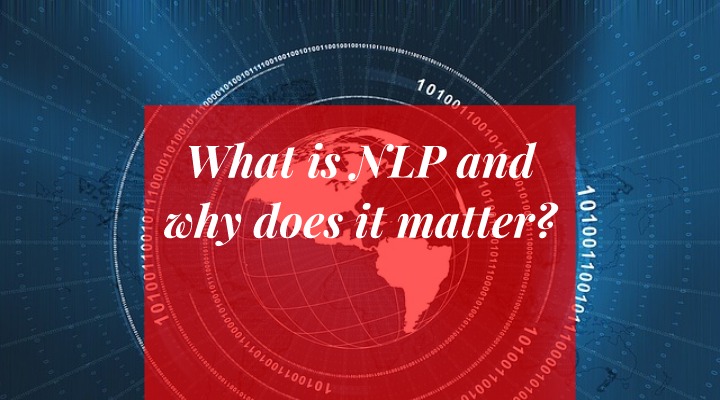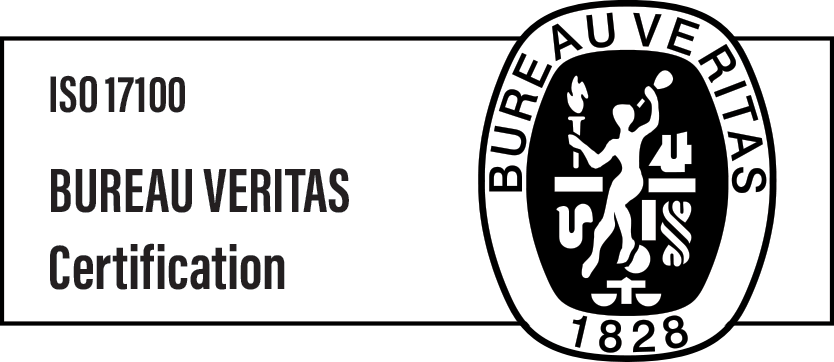What is NLP and why does it matter?

What is NLP and why does it matter?
Although the translation industry is not the very first thing that comes to mind when you think about modern, intelligent technologies, the fact is, a lot has been happening in this sector lately. NLP is one of the technologies that helps translators work better, quicker and more effectively. And today, we’re going to take a look at this technology. What do you need to know about it, and why does it matter? Let’s find out!
NLP stands for natural language processing. It’s a technology that makes the most of modern AI, linguistics and automation. The general idea is that apps and algorithms using NLP can “read”, process and understand the specific text or voice. This technology is more and more commonly used in the translation industry, where it supports machine translation apps and LSPs providing services like text extraction or transcripts.
There are many fascinating applications of NLP in real life. In this article, we’re going to mention three of them:
- Smart assistants
- Text classification and extraction
- Machine translation
Let’s start with the first area.
Chatbots and voicebots
Today, intelligent assistants find applications in a growing number of places and industries. Companies all over the world use them to:
- Answer frequently asked questions
- Schedule appointments
- Gather information (e.g., by conducting customer surveys)
- Provide information about new products and services
All of that can be done without human involvement. As a result, chatbots and voicebots help you save a lot of time and money. According to various estimations, intelligent assistants can take over from 30 to 70% of all communication between your company and its customers. And since this technology has been developing rapidly for some time now, we can expect that chatbots will be far more efficient and accurate in the near future.
Let’s talk about the technology behind these apps, frequently referred to as conversational AI. First off, we have to mention NLP, obviously. Both voicebots and chatbots are all about understanding what the customer/user says or types. NLP enables just that. When we talk about voicebots, it’s vital to emphasise that they are far more advanced than chatbots. They use two more complex technologies:
- ASR: automated speech recognition. This technology allows voicebots to properly “hear” and process what the given user is saying.
- TTS: text to speech. As its name suggests, it’s a technology that enables converting written text or commands into speech in a specific language.
In their basic form, chatbots and voicebots operate in just one language. But more and more often, we can talk about something called multilingual chatbots. Let’s take a closer look at them.
WHAT ARE MULTILINGUAL CHATBOTS?
In short, these are bots that recognise, understand and communicate in more than one language. The benefits of this solution are apparent. Your company can automate customer service and communication all over the world. There are two main ways to achieve this goal:
- You can create a separate bot for every language. As a result, you have a highly advanced solution that communicates 100% naturally.
- You can fuel your assistant with a machine translation feature.
Of course, the first option is better, but it’s also far more expensive and time-consuming. To make the most of both worlds, you can opt for an external CMS system that will store answers and queries in different languages and simply adapt them to a specific conversation.
Chatfuel, a company offering a tool to build Messenger-based chatbots, uses Google Dialogflow to help your bot better understand the context of user messages and respond in their languages.
 image source: https://chatfuel.com/blog/posts/create-a-multilingual-chatbot
image source: https://chatfuel.com/blog/posts/create-a-multilingual-chatbot
Smart assistants are the first example of NLP in action. Now, let’s take a look at the second one.
Text classification and extraction
Granted, this service seems more straightforward, especially compared to voicebots, but it’s still very useful. In general, text classification and extraction are two back-office processes that facilitate the understanding, processing and categorising of unstructured texts. They come in handy primarily when you have to:
- Digitise and/or translate older documents
- Turn printed documents into legible PDF files
Here, we should mention yet another technology – OCR, which stands for optical character recognition. This technology is used more and more frequently in all business branches – from administration to translation. Many documents that clients entrust us to work with are in the form of a scan or a PDF file – formats that are troublesome to edit or copy. In such a situation, OCR comes to the rescue and allows translators to quickly turn these documents into editable digital files.
For you, as a company, this technology can be useful, too! If your employees spend a lot of time and energy manually rewriting texts, you should think about investing in OCR. Modern OCR apps are capable of reading text from graphic and non-editable files as well as converting it to open, editable text files.
Multilingual NLP with a machine translation
MT is the quickest and the most straightforward way to make your NLP-based apps fully multilingual, and we talked a lot about this technology in several articles on our blog:
There are four basic types of machine translation that can be used in NLP:
- SMT: statistical machine translation. The most straightforward form that doesn’t take context into consideration. It simply translates word by word.
- RBMT: rule-based machine translation. It translates sentence by sentence and takes grammatical rules into account.
- HMT: hybrid machine translation. It’s a mix of the previous two. It’s also frequently based on so-called translation memory.
- NMT: neural machine translation. It’s the most advanced form of MT that tries to imitate the way the human brain works (hence the name). It uses advanced models to develop a correct, accurate, and natural translation.
Combining NLP with MT results in multilingual capabilities that you can use to grow your business. Of course, this doesn’t mean that translators aren’t necessary anymore. So far, not even NMT is perfect, and every machine-translated text still needs a human touch to make it 100% natural and correct, which is precisely why you have us! If you’re looking for a reliable partner that will help you conquer the Polish market and amaze Polish customers with a flawless language, we’re your best bet! Drop us a line and tell us something more about your language-related endeavours.

